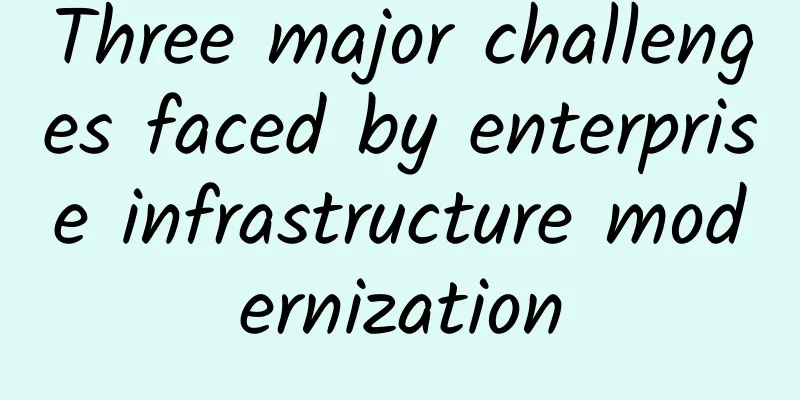Three major challenges faced by enterprise infrastructure modernization

|
Currently, business development often leads to a rapid increase in data volume, resulting in higher demands for data backup and recovery. However, most companies now use traditional IT architecture that scales upward, and are constantly facing new challenges in infrastructure integration, management, and expansion.
According to the survey, most enterprises do not realize that 70% of their data exists on secondary storage; 49% of the enterprises surveyed said that RTO/RPO targets are the biggest challenge they face; 44% of the enterprises surveyed solve the problem of insufficient storage capacity by adding disks. For most enterprises, an increase in data volume means an increase in secondary storage. However, secondary storage will occupy a large amount of IT resources, and the overall efficiency is difficult to meet business objectives. At the same time, the IT architecture with multiple data management solutions will create data islands and greatly increase the complexity of the IT environment. Therefore, most companies face the following three challenges. Infrastructure Integration Challenges The secondary storage products currently on the market are relatively complex, and the implementation process will consume a lot of manpower and time for enterprises. At the same time, the deployment of multiple different solutions will inevitably create data silos, which will hinder the visibility, effective management and portable migration of all data. Ultimately, enterprises face a variety of pain points such as heavy workload for operation and maintenance personnel, high hardware costs, time-consuming data migration, insufficient use of IT resources, and lack of data insights. Infrastructure Management Challenges Traditional IT infrastructure management usually faces pain points such as too many manual processes, time-consuming system integration, vendor lock-in that makes replacement difficult, and difficulty in migrating data to different storage tiers. As a result, enterprises face problems such as difficulty in achieving SLA targets, waste of human resources, high hardware costs, and difficulty in hardware upgrades. Infrastructure Scaling Challenges When enterprises expand their infrastructure, they often find that the infrastructure is inflexible, difficult to expand, difficult to meet service level requirements, difficult to predict the performance and cost of the expanded architecture, and difficult to achieve RTO and RPO targets. These will directly affect the ability of enterprises to meet business needs, meet data compliance requirements, and provide data insights for the business, ultimately affecting the overall digitalization process of the enterprise. To avoid the above three challenges, enterprises must build a new platform that is predictable, highly simplified and integrated. |
>>: Five firewall configuration mistakes to avoid
Recommend
The "highest academic degree dialogue" in the history of Huawei Cloud City Summit, doctors in four major fields talked about how to make scientific research benefit society
With the popularization of emerging technologies ...
How does 5G achieve beamforming?
Beamforming, as one of the core technologies of 5...
More secure: Windows 10 will block installation of uncertified drivers
With the October 2020 Patch Tuesday cumulative up...
What kind of sparks will be created when 5G meets the power grid?
In the past, electricity changed the way of produ...
NASA thinks the moon will soon have its own internet
It's been nearly 50 years since astronauts la...
How will HTTP and DNS protocols evolve in the 5G era?
HTTP and DNS have almost become two household pro...
This year we have seen the rapid and joint development of artificial intelligence and 5G
For the first time, RedMonk replaced Java in the ...
H3C wins bid for Qingdao Metro to boost the development of Qingdao's urban rail transit
Recently, New H3C Group, a subsidiary of Tsinghua...
From the road to practice, Huawei is on the top of the storm
At present, all industries are accelerating into ...
Enrich online and in-app user experience and increase ROI through optimized video
Today's consumers are more eager than ever to...
5G and manufacturing: the missing link to drive Industry 4.0?
5G can help transform the manufacturing industry....
PoE Basics: Do You Really Understand PoE?
By transmitting both data and power over the same...
CMIVPS Seattle VPS (AS4837) simple test
We have previously shared information about CMIVP...
F5: Hybrid cloud architecture behind the "Double Eleven" carnival
The total sales volume of the entire network reac...
Do you feel that 4G is slowing down? Too many users is the main reason and it has nothing to do with 5G promotion
After operators launched the "unlimited data...









